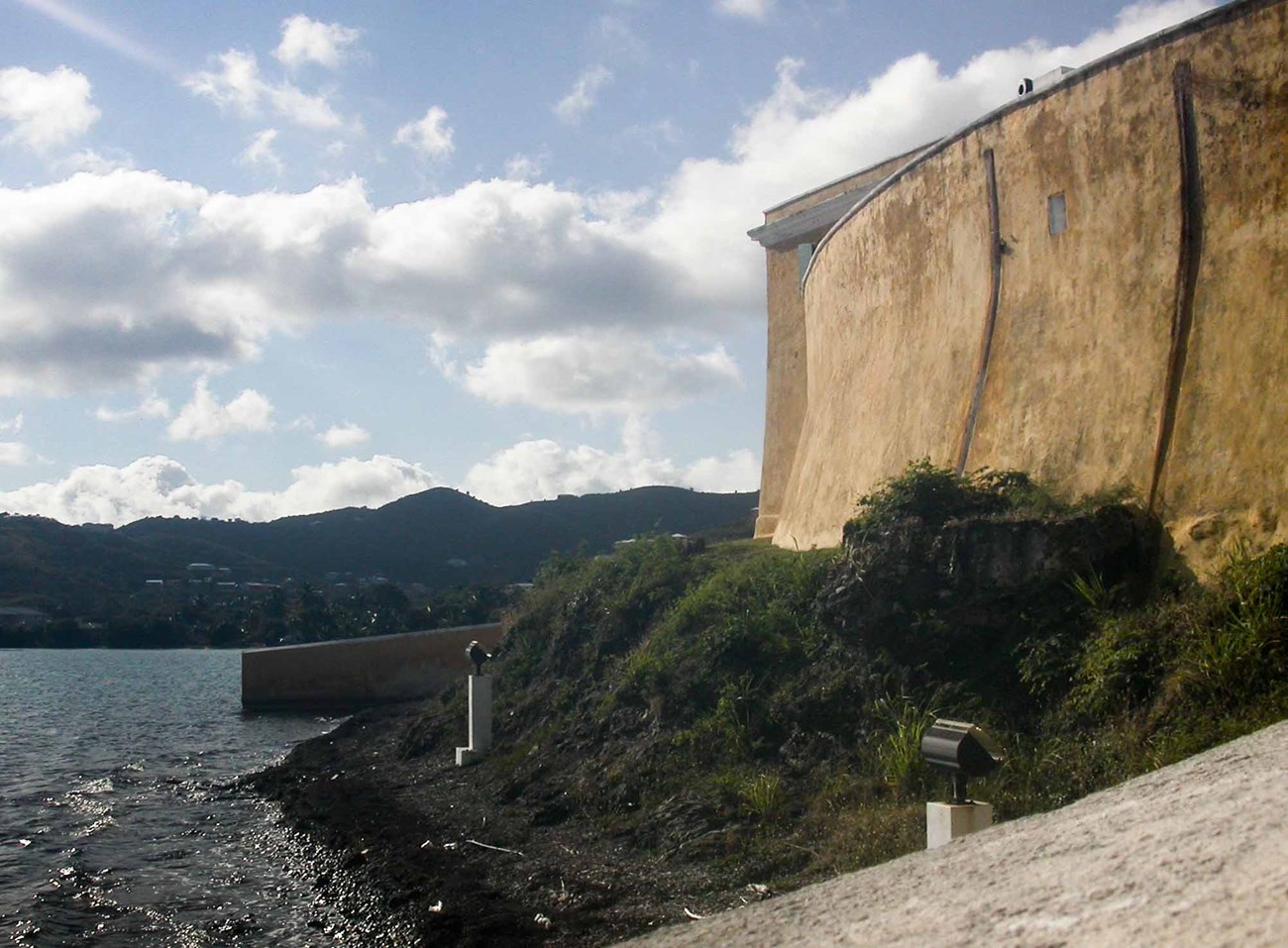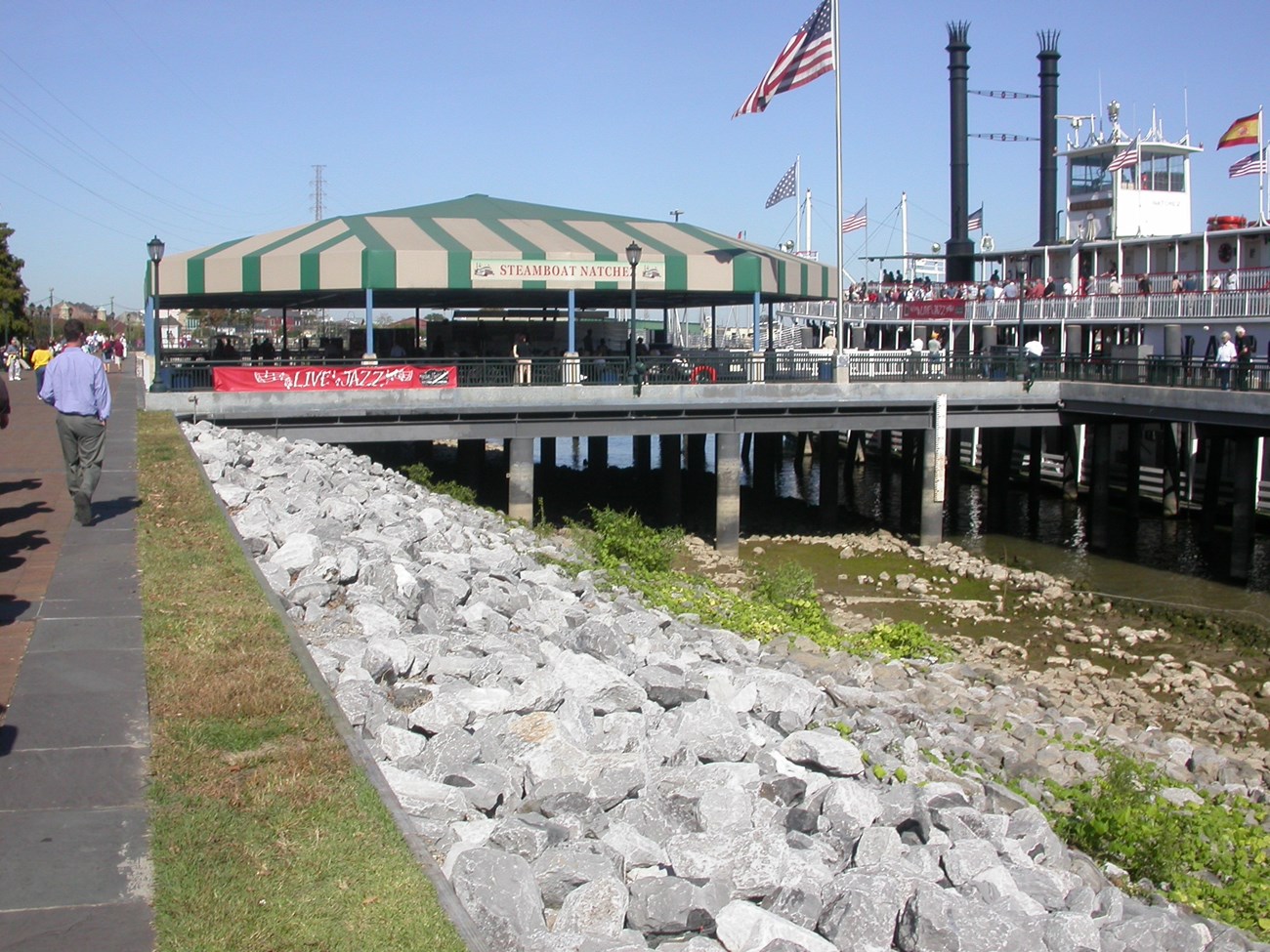Part of a series of articles titled Coastal Engineering—Hard Structures.
Previous: Groins and Jetties
Article

NPS photo by Rebecca Beavers.
Shore parallel structures include seawalls, bulkheads, and revetments. These structures are designed to protect resources behind them from the impacts of wave energy and associated erosion. Although they hold soils in place behind the structure, seawalls usually accelerate erosion on adjacent beaches. The structures impede natural landward migration of beaches in response to sea level rise, halting upland growth of new beach. In some instances, the beach migrates entirely to the base of the seawall and disappears completely (passive erosion). Wave energy is reflected off seawalls, increasing erosion at the toe of the wall (active erosion) and subsequently from adjacent beaches as well. In many areas, beaches have completely eroded and disappeared on account of seawalls. Revetments, like seawalls, protect resources landward of the structure but likely at the expense of the seaward slope. Materials such as armorstones, stepped concrete, or rip-rap stones are placed directly in the existing slope face to absorb wave energy and strong currents. Bulkheads provide a similar purpose but are vertical standing structures running parallel to the shoreline, often constructed of rock-filled timber cribs and gabion, steel, or concrete.

NPS photo by Rebecca Beavers.
Due to the adverse effects of shore parallel structures, alternatives are strongly encouraged and actively sought by the National Park Service. However, in cases where valuable resources are not feasible to relocate such as cultural landscapes and associated sensitive cultural and historic assets, seawalls, revetments, and bulkheads significantly reduce asset vulnerability. This is the case for seawall repair projects at Ellis Island, a part of the Statue of Liberty National Monument. Other parks such as Golden Gate National Recreation Area, California, are examples of how to manage active coastlines in a highly developed area. Still, hard structures are removed whenever possible to support the National Park Service mission of restoring natural coastal processes. This will likely be the case for Sand Point, Pictured Rocks National Lakeshore which has experienced amplified erosion since instillation of a rock revetment in the mid 1980’s. Planned removal of the structure will restore the beach’s ability to naturally accrete sediment.
Part of a series of articles titled Coastal Engineering—Hard Structures.
Previous: Groins and Jetties
Last updated: April 5, 2019